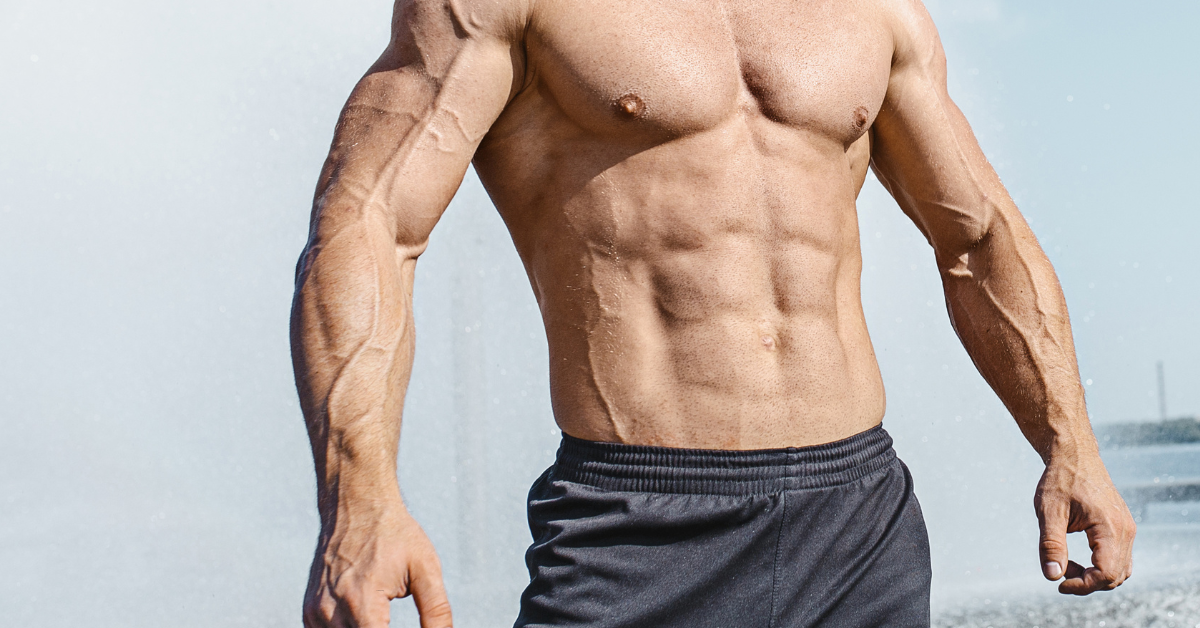Recovery is just as important as the workout itself. If you’re not recovering properly, you’re missing out on muscle growth, fat loss, and long-term progress. In this article, we’ll talk about 10 science-backed recovery strategies, including two unique ones that can give you an edge.
We’ll cover workout recovery, post-workout tips, the muscle repair process, benefits of protein after a workout, creatine monohydrate, hydration, ice bath recovery and more.
Understanding Muscle Repair
When you exercise—especially during strength training or high-intensity workouts—you cause tiny tears in your muscle fibers. This damage triggers your body to start a repair process, which is how your muscles grow back stronger and more resilient. This process requires protein, rest, and time. Recovery is when the real growth happens. Skipping recovery can delay results, increase soreness, and even lead to injury.
Most people think of recovery as “taking a day off”. It’s possible to lift weights every day of your life and recover effectively. Splitting body parts, active recovery, and utilizing different energy systems with different muscle groups can give you the variety and separation needed to recover lagging body parts.
Prioritize Post-Workout Nutrition
Eating the right foods after a workout helps your body repair and grow stronger. Focus on a mix of protein and carbohydrates within 30–60 minutes after your session.
- Example: Grilled chicken with rice (slow absorption) & protein shake with banana (fast absorption).
Some of the best post-workout meals are the simplest to prepare. Quick absorbing protein and carbs are best for post-workout recovery. Many ask “how much protein after workout?”. For most of us, 25-30 grams of protein is plenty for full protein synthesis. More than that and you’re just wasting your money. There’s been extensive studies regarding 50g or more consumption after a workout with little to no extra effect on muscle repair.
Don’t Skip the Carbs
Carbs refill your glycogen stores, which fuel your muscles. The more intense your workout, the more important carbs become.
- Best sources: Sweet potatoes, quinoa, oats, whole-grain bread
Eat your carbs after a workout. Eating carbs replenishes glycogen stores in the muscles. Replenishing these stores fast helps the muscle recover quicker. It’s never fun having sore muscles a couple days after you worked them, and carb timing is important to recovery.
Hydrate Smarter
You lose water and electrolytes through sweat. Rehydrating helps prevent cramping and fatigue.
- What to drink: Water, coconut water, electrolyte drinks (low in sugar)
Not only does it keep you alive, but people typically feel weaker than usual, fatigued, hungry, and have low energy even if the body is mildly dehydrated. These are factors that affect recovery, performance, and fat loss. Most people look to alternative fuel sources and supplements to fix these underlying issues, yet all you may need is to get more water into your system so the body can do it’s job properly.
Use Creatine Strategically
Creatine helps muscles produce energy during high-intensity training. Some say taking it post-workout can improve strength and speed up recovery, but there is little scientific evidence that supports this claim.
- Tip: 3-5g with carbs for better absorption
It’s been proven that building up of creatine in the muscles over time is more important than worrying about what time of day is best to take it.
Another misconception is the amount that can be taken per day. The body naturally produces creatine, and typically we get the rest of what we need through meat, fish and dairy. It’s scientifically proven that 5g per day is plenty, and there is no need to take any more than that.
Spread Protein Throughout the Day
Don’t just rely on your post-workout shake. Aim to eat high-quality protein every 3–4 hours to support continuous muscle repair.
- Examples: Eggs for breakfast, chicken/turkey at lunch, cottage cheese at night
The best way to build muscle and lose fat is to simply increase the amount of protein you eat. Protein makes you feel full, it can’t be stored as fat, and is the only macronutrient that directly affects muscle recovery.
6. Try Compression Gear
Wearing compression sleeves or tights post-workout may reduce soreness and improve blood flow. Increase blood flow delivers more oxygen to the muscle, allowing for quicker recovery.
- When to use: After heavy lifting, long runs, or HIIT sessions
Use Ice Baths for Inflammation
Cold water immersion may help reduce muscle inflammation and speed up recovery in some athletes.
- How: Submerge the body in ice cold water from 2-5 minutes. Repeat as necessary.
Ice baths also stimulate fat loss. The shiver induced by the cold activates brown fat, the type of fat that allows the body to generate heat.
Book a Recovery Massage
Massage increases circulation, reduces muscle tension, and speeds healing. It can be a game-changer after intense training weeks.
- Type to try: Sports massage or deep tissue
Sleep Is Your Superpower
Muscles repair most during deep sleep. Aim for 7+ hours a night. Quality sleep boosts hormones that help with fat loss and recovery.
- Tips: Stick to a schedule, keep the room cool, avoid screens before bed
There are 4 stages of sleep, the third of which is the most important for recovery. If you’re waking up after 4 or 5 hours, there’s a good chance you’re missing out on the most important recovery tool in your arsenal.
Two Recovery Methods You Might Not Be Using
Here are two underrated strategies to recover faster and feel better:
a. Active Recovery Days
Light movement like walking, yoga, or easy cycling helps flush out waste products and improves circulation without overloading your body.
- Bonus: Reduces soreness and helps you stay consistent
b. Foam Rolling (Self-Myofascial Release)
Using a foam roller or massage gun can break up muscle knots and improve range of motion.
- When to do it: After workouts or on rest days
Final Thoughts
The best recovery strategy is the one you’ll stick with. Start by improving your post-workout meal and hydration. Then experiment with compression, ice baths, and sleep habits. And don’t overlook active recovery and foam rolling—they could be your secret weapons.



